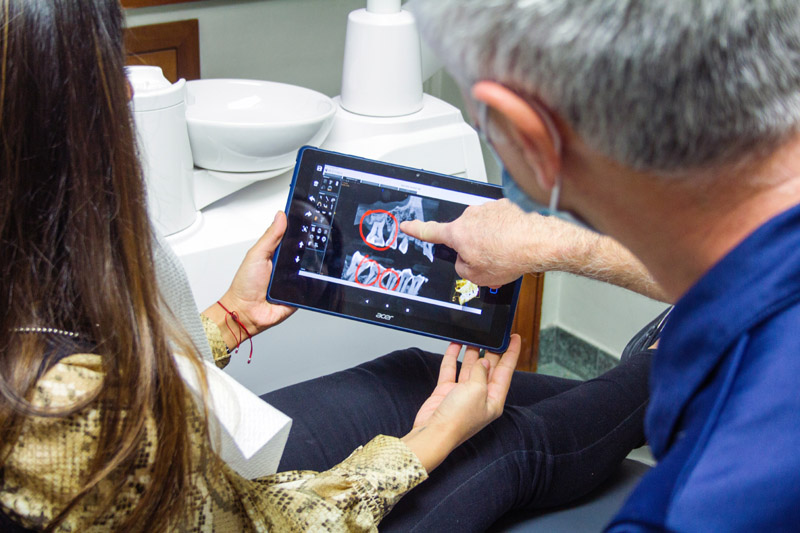 Clinical Diagnosis
Clinical Diagnosis
Study estimates diagnostic errors are linked to nearly 795,000 deaths or cases of permanent disability in America each year
An estimated 795,000 Americans die or are permanently disabled by diagnostic error each year, as per a study released by scientists at the Johns Hopkins School of Medicine.
Improving diagnosis in health care is a moral, professional and public health imperative, according to the U.S. National Academy of Medicine.
However, little is known about the full scope of harms related to medical misdiagnosis — current estimates range widely. Using novel methods, a team from the Johns Hopkins Armstrong Institute Center for Diagnostic Excellence and partners from the Risk Management Foundation of the Harvard Medical Institutions sought to derive what is believed to be the first rigorous national estimate of permanent disability and death from diagnostic error.
"The original research article was published July 17 by BMJ Quality & Safety. Results of the new analysis of national data found that across all clinical settings, including hospital and clinic-based care, an estimated 795,000 Americans die or are permanently disabled by diagnostic error each year, confirming the pressing nature of the public health problem," read the statement issued by the Johns Hopkins School of Medicine.
“Prior work has generally focused on errors occurring in a specific clinical setting, such as primary care, the emergency department or hospital-based care,” says David Newman-Toker, M.D., Ph.D., lead investigator and director of the Center for Diagnostic Excellence. “These studies could not address the total serious harms across multiple care settings, the previous estimates of which varied widely from 40,000 to 4 million per year. The methods used in our study are notable because they leverage disease-specific error and harm rates to estimate an overall total.”
To identify their findings, researchers multiplied national measures of disease incidence by the disease-specific proportion of patients with that illness who experience errors or harms.
Researchers repeated this method for the 15 diseases causing the most harms, then extrapolated to the grand total across all dangerous diseases.
To assess the accuracy of the final estimates, the study’s authors ran the analyses under different sets of assumptions to measure the impact of methodological choices and then tested the validity of findings by comparing them with independent data sources and expert review.
The resulting national estimate of 371,000 deaths and 424,000 permanent disabilities reflects serious harms widely across care settings, and it matches data produced from multiple prior studies that focused on diagnostic errors in ambulatory clinics and emergency departments and during inpatient care.
Vascular events, infections and cancers, dubbed the Big Three, account for 75% of the serious harms.
The study found that 15 diseases account for 50.7% of the total serious harms.
Five conditions causing the most frequent serious harms account for 38.7% of total serious harms: stroke, sepsis, pneumonia, venous thromboembolism and lung cancer.
The overall average error rate across diseases was estimated at 11.1%, but the rate ranges widely from 1.5% for heart attack to 62% for spinal abscess.
The top cause of serious harm from misdiagnosis was stroke, which was found to be missed in 17.5% of cases.
The researchers suggest that diseases accounting for the greatest number of serious misdiagnosis-related harms and with high diagnostic error rates should become top priority targets for developing, implementing and scaling systematic solutions.
“A disease-focused approach to diagnostic error prevention and mitigation has the potential to significantly reduce these harms,” Newman-Toker says. “Reducing diagnostic errors by 50% for stroke, sepsis, pneumonia, pulmonary embolism and lung cancer could cut permanent disabilities and deaths by 150,000 per year.”
Newman-Toker adds that disease-based solutions have already been developed and deployed at Johns Hopkins to address missed stroke, the top identified cause of serious harms.
These solutions include virtual patient simulators to improve front-line clinician skills in stroke diagnosis, portable eye movement recordings via video goggles and mobile phones to enable specialists to remotely assist front-line clinicians in diagnosing stroke, computer-based algorithms to automate aspects of the diagnostic process to facilitate scaling, and diagnostic excellence dashboards to measure performance and provide feedback on quality improvement.
“Funding for these efforts remains a barrier,” Newman-Toker says. “Diagnostic errors are, by a wide margin, the most under resourced public health crisis we face, yet research funding only recently reached the $20 million per year mark. If we are to achieve diagnostic excellence and the goal of zero preventable harm from diagnostic error, we must continue to invest in efforts to achieve success.”
Other members of the multidisciplinary research team involved in the report are Najlla Nassery, Adam Schaffer, Chihwen Winnie Yu-Moe, Gwendolyn Clemens, Zheyu Wang, Yuxin Zhu, Ali Saber Tehrani, Mehdi Fanai, Ahmed Hassoon and Dana Siegal.
Support Our Journalism
We cannot do without you.. your contribution supports unbiased journalism
IBNS is not driven by any ism- not wokeism, not racism, not skewed secularism, not hyper right-wing or left liberal ideals, nor by any hardline religious beliefs or hyper nationalism. We want to serve you good old objective news, as they are. We do not judge or preach. We let people decide for themselves. We only try to present factual and well-sourced news.






